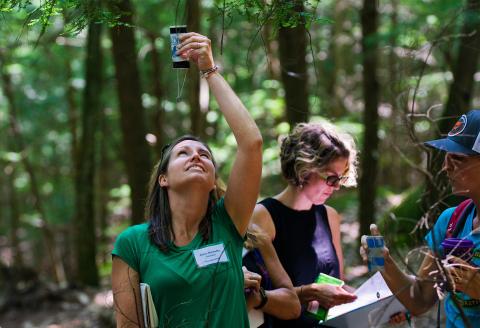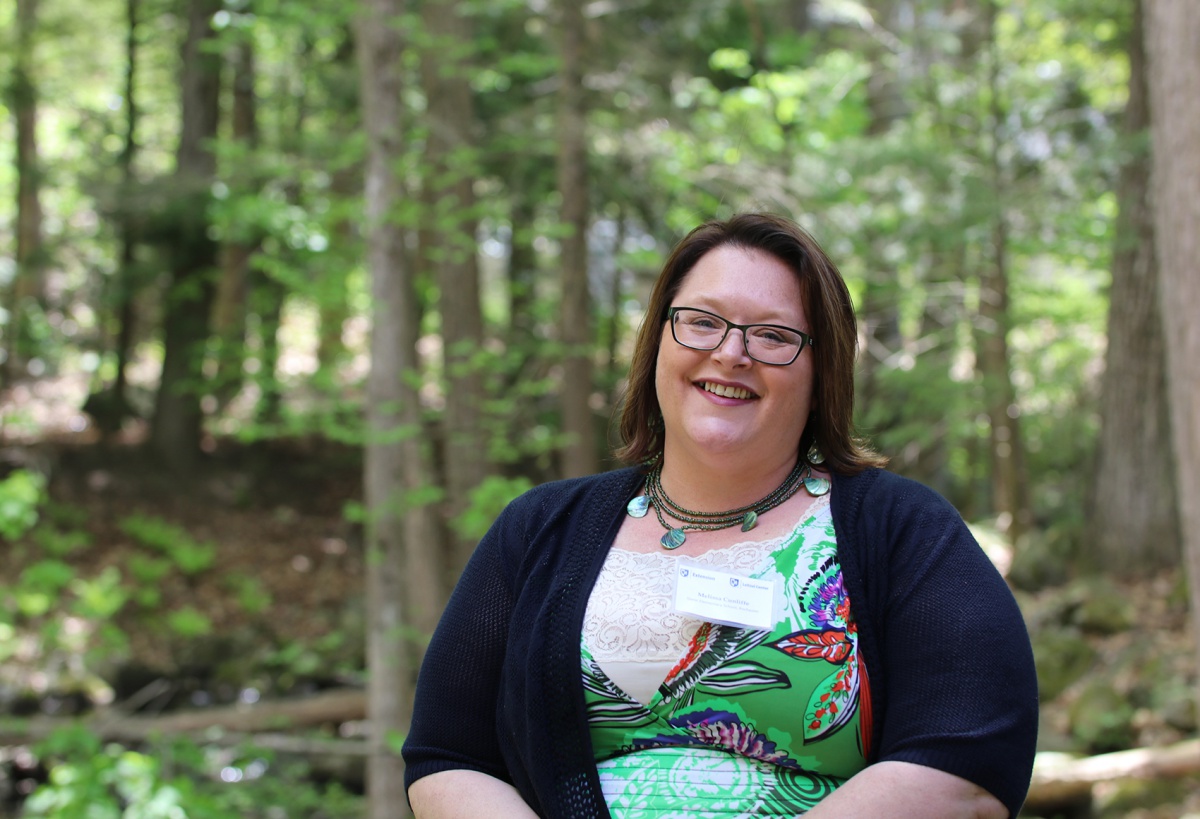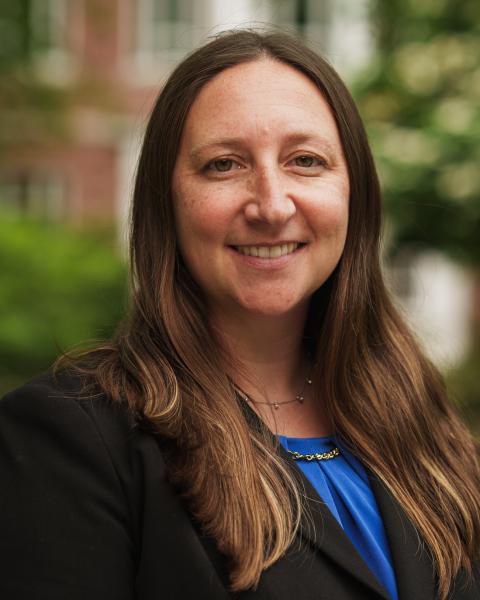Extension Volunteers Help Bring Citizen Science to NH Classrooms

Each week Mimi Jost visited Kate Zimar's second grade class at Mast Way Elementary School in Lee, she brought "treasures," Zimar recalls.
One day Jost pulled tree samples from her bag so that the students’ small fingers could count the circular rings and determine each tree’s age. Other times her pockets bulged with tulip bulbs and bean seeds. A mushroom that she found growing in a glass bottle prompted lots of questions from the children. Why did it start growing in there? How long did it take to grow?
An avid naturalist, Jost has served as a volunteer for the Schoolyard Science Investigations by Teachers, Extension Volunteers and Students (Schoolyard SITES) research program.
The program, which pairs Extension science volunteers with elementary school teachers to bring citizen science projects to elementary students, is made possible by a grant from the National Science Foundation (NSF) and in cooperation with the UNH Leitzel Center.

Teachers and volunteers participate in a workshop series over the course of a year led by UNH science education and citizen science professionals. Participants learn together as a team and gain experience with scientific investigations and content that they will use later in their classrooms.
Students learn about biodiversity, seasonal precipitation patterns, plant phenology and/or wildlife habitats through immersive, authentic experiences. Each volunteer and teacher team decides what content is most appropriate for their classroom, but all activities align with Next Generation Science Standards and school district requirements.
Before participating in Schoolyard SITES, Melissa Cunliffe, a fourth-grade teacher at Gonic School in Rochester, had never heard of citizen science. “This program has changed how I structure my whole curriculum to think about the changing seasons. It’s especially meaningful for urban places like Rochester. Many of my students live in apartment buildings. It’s important that they develop a connection with their environment and realize they are stewards of the Earth,” she says.

Some classrooms have focused on bird identification by setting up feeders and participating in a national citizen science program called Project FeederWatch. Students have drawn field guides featuring common backyard birds like robins and sparrows.
Other classrooms have studied native trees by using data collection, measurements and graphing to track tree growth and maple syrup production.
UNH Provost and Vice President for Academic Affairs Wayne Jones says the program demonstrates high-impact learning experiences that align with the university’s strategic priority to support New Hampshire’s quality of life and economy, noting the importance of STEM education.

“The gem that is UNH combined with the strength of the local school systems creates something truly special,” Jones says. “It’s important that we grow and celebrate these valuable partnerships.”
Kathy Prewitt, a fifth-grade teacher, explains that her classroom’s precipitation study addressed scientific crosscutting concepts such as scale and proportion. “The kids have been really excited about their contributions to the dataset and comparing their measurements with other schools…Schoolyard SITES works really well. I’ve never seen kids learn decimals so fast. This year they had context,” she says.
Schoolyard SITES has been implemented in Rochester, Portsmouth, Manchester, Nashua, Bedford and the Oyster River Cooperative School District during the past two years. A final cohort will be selected under this NSF grant for the 2021-2022 school year.

Learn More About Schoolyard SITES
This story was originally posted in June 2019 and updated in September 2020.
Related Resource(s)
